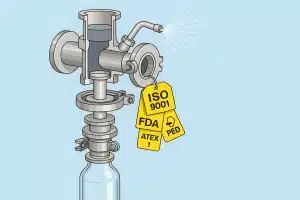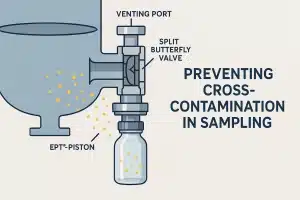A water heater TPR drain line (Temperature and Pressure Relief valve drain line) is a vital safety component in water heater systems.
It serves to release water when the temperature or pressure exceeds the set limits, ensuring that your water heater doesn’t become a hazardous device.
Proper installation and maintenance of the TPR drain line are crucial for the safe operation of water heaters, especially in residential and industrial applications.
However, integrating this drain line into an existing system can present challenges. In this guide, we will explore the importance of water heater TPR drain lines, address common issues, and offer solutions to help you maintain an efficient and safe system.
What Is a Water Heater TPR Drain Line?
A water heater TPR drain line is a pipe connected to the Temperature and Pressure Relief (TPR) valve of a water heater.
The TPR valve is designed to open and release water when either the temperature or pressure inside the tank exceeds safe levels.
The drain line ensures that this excess water is safely diverted away from the system, preventing dangerous conditions such as tank ruptures or explosions.
The TPR drain line should direct the released water to a safe location, like a floor drain, to minimize risk.
Famat sa is a leading company in the industrial valve manufacturing sector, known for its precision and durability.
Compatibility Challenges with Water Heater TPR Drain Lines
When retrofitting or installing a new TPR drain line, you may face compatibility issues, particularly with existing systems.
Problems such as mismatched sizes, improper materials, or inadequate connections can create safety hazards or operational inefficiencies. Below are some realistic solutions to these challenges:
- Custom Drain Line Length and Fittings: Opt for adjustable TPR drain lines or fittings that can be tailored to your existing system’s specifications. This minimizes the need for expensive modifications.
- Use Flexible Materials for Compatibility: Flexible materials such as PEX or flexible copper tubing can help ensure a proper fit without major adjustments to the existing piping.
- Material Compatibility Checks: Before installation, verify that the materials of your TPR drain line are compatible with your water heater and existing piping. Choosing corrosion-resistant materials ensures the longevity of the system.
- Proper Sizing of Drain Lines: Ensure the TPR drain line has the proper diameter to handle the maximum volume of water that may be discharged. Sizing the drain line appropriately helps prevent blockages or overflows.
- Expert Installation and Assessment: Engage with qualified technicians who can assess your existing system and install the TPR drain line in compliance with local safety codes and manufacturer recommendations.
Need assistance with TPR drain line installation? Contact our experts today for a customized solution tailored to your system.
Frequently Asked Questions About Water Heater TPR Drain Lines
What Is the Purpose of a TPR Drain Line in a Water Heater?
The TPR drain line is an essential safety feature that channels excess water released by the TPR valve when temperature or pressure inside the water heater exceeds safe levels.
It ensures that this water is safely directed away from the system, preventing accidents.
What Happens If a TPR Drain Line Is Installed Incorrectly?
An incorrectly installed TPR drain line can lead to dangerous situations, such as water spilling onto floors or creating pressure in unsafe locations.
Always ensure that the drain line directs water to a safe location and complies with local regulations.
Solving Common Compatibility Problems with TPR Drain Lines
Why Use a TPR Drain Line for Your Water Heater?
A TPR drain line is a critical safety component that helps maintain the integrity of your water heater by redirecting excess water.
It ensures that your water heater can function at safe temperatures and pressures without risk of malfunction.
Solutions to Common Issues:
- Invest in High-Quality Components: High-quality TPR drain lines and valves minimize the chances of leaks or pressure build-up, ensuring a long lifespan and safe operation.
- Pre-Installation Consultations: Before installation, consult with professionals to ensure the right size and material are selected for your water heater system.
- Regular Inspections and Maintenance: Ensure that the TPR drain line is regularly checked and maintained to prevent blockages, corrosion, and leaks that could jeopardize your system’s safety.
Contact our team for professional consultation and installation of your water heater TPR drain line today.
The Benefits of Properly Installed TPR Drain Lines
Can TPR Drain Lines Be Full Port?
Typically, TPR drain lines are not full-port valves, as their primary function is to release excess water under certain conditions.
A full-port valve design isn’t necessary, as the drain line focuses on managing the release of water rather than offering full-flow regulation.
What Are the Common Disadvantages of TPR Drain Lines?
- Improper Sizing: Using an incorrectly sized TPR drain line can cause blockages or insufficient drainage.
- Risk of Corrosion: TPR drain lines can corrode over time, especially if they are exposed to high temperatures or harsh water conditions.
- Clogs and Obstructions: If the drain line isn’t maintained properly, it could become blocked, preventing the safe release of water during an emergency.
Ensuring Safe and Efficient Operation of Your TPR Drain Line
The safe operation of your water heater depends on the correct installation and maintenance of the TPR drain line. Selecting the right materials, ensuring proper sizing, and working with qualified technicians will help maintain the integrity and safety of your water heater system.
Ensure the safety of your water heater system with top-quality TPR drain lines.
In conclusion, a properly installed and maintained water heater TPR drain line is essential for the safety and efficiency of your water heating system.
By addressing compatibility challenges with solutions like customized fittings, quality materials, and expert consultations, you can ensure that your TPR drain line works effectively, protecting your water heater from damage.
For enhanced performance and flow control, consider integrating a full port ball valve alongside your water heater TPR drain line to ensure optimal water heater safety and efficiency.





